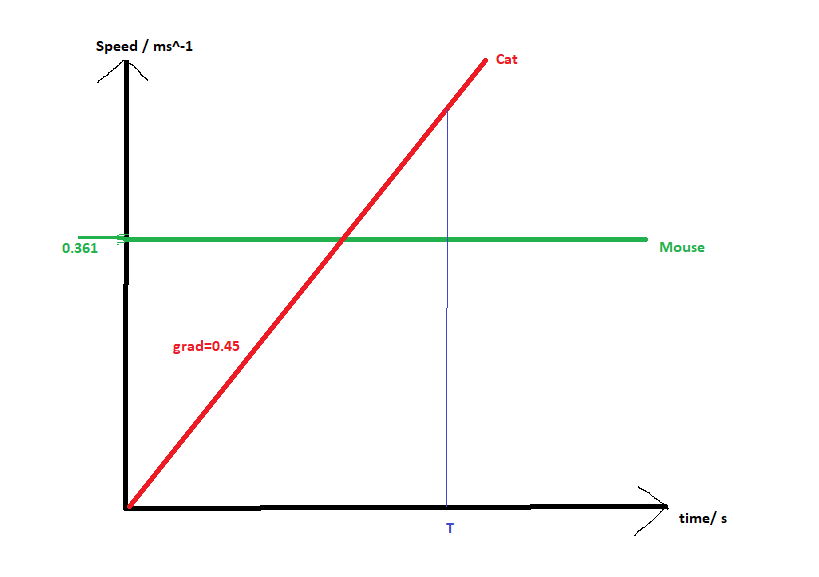Constant speed vs constant acceleration - When will B catch up A?
A cat is waiting on the sidewalk. He sees a mouse running at a constant speed of 1.3 km/h. Precisely when the mouse is in front of the cat, the cat starts running after it. The cat's constant acceleration is 0.45 m/s^2.
A) How long will it take for the cat to catch the mouse?
B) What will be the distance the mouse traveled when the cat catches it?
I'm not sure what kind of function I would need to create in order to get the answer to those questions.
Thank you for your help!
A cat is waiting on the sidewalk. He sees a mouse running at a constant speed of 1.3 km/h. Precisely when the mouse is in front of the cat, the cat starts running after it. The cat's constant acceleration is 0.45 m/s^2.
A) How long will it take for the cat to catch the mouse?
B) What will be the distance the mouse traveled when the cat catches it?
I'm not sure what kind of function I would need to create in order to get the answer to those questions.
Thank you for your help!
1 Answer
A) 1.61 seconds
B) 0.580 metres
Explanation:
Perhaps the best way to visualise this is on a speed-time graph. To do this, we need to pick apart the question.
As a forenote, anything in
What do we know?
- the
- the
- the
Having said this, we can sketch a graph.

Let
We can use equations of motion to find equations of motion for both the cat and the mouse.
For the cat
We can use the equation
For the mouse
Again,
Since at
Solving simultaneously:
So it takes the cat 1.61 seconds to catch up with the mouse (3sf).
For part B, we can substitute into either equation, since the distance
Let
So the mouse (and also the cat) has travelled 0.580m (3sf).
These numbers personally seem a bit too small, so I'm not sure on my arithmetic, although I think my logic is correct. Hope this helps!

